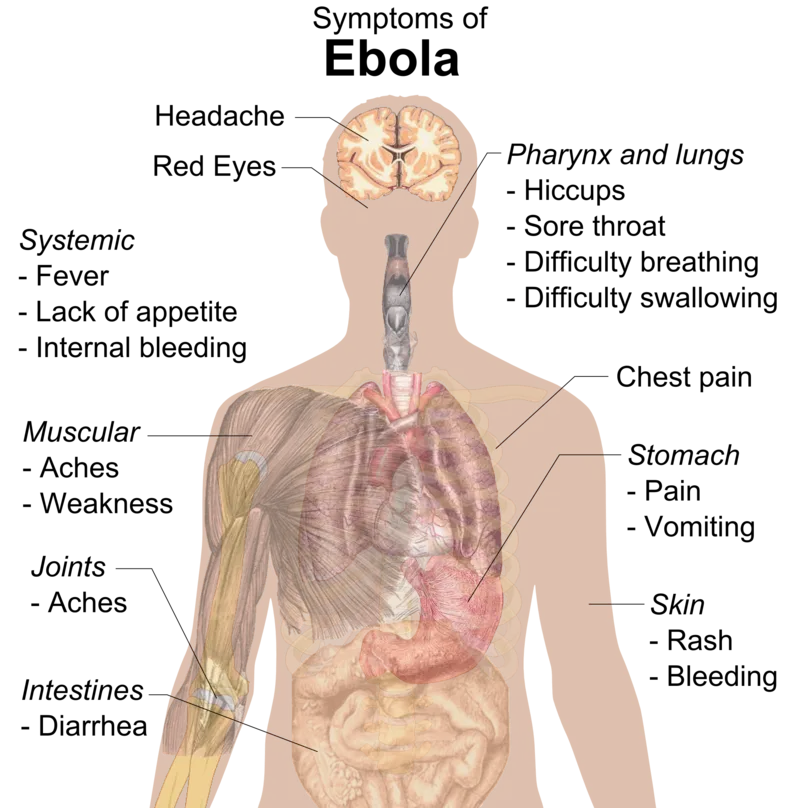
The Ebola virus disease (EVD) is a potentially fatal illness caused by one of five strains of the Ebola virus. It is an infectious and highly contagious disease that can be transmitted through contact with an infected person's bodily fluids. Symptoms of EVD include fever, severe headache, muscle pain, fatigue, diarrhea, vomiting and unexplained bleeding or bruising. Early diagnosis and prompt treatment are essential for survival. Prevention of EVD includes washing hands frequently, avoiding contact with infected individuals, and taking precautions when caring for individuals with suspected EVD. Treatment for EVD includes supportive care such as rehydration, oxygen therapy, and nutritional support. In addition, antiviral drugs and vaccines have been developed to combat the virus. This overview will provide an in-depth look at the symptoms, prevention and treatment of EVD.
EVD is a deadly disease caused by one of five strains of the Ebola virus. There are two known species of Ebola: Zaire and Sudan. The Zaire species was responsible for two major outbreaks of EVD in 1976 in Zaire (now the Democratic Republic of Congo) and in 2014-2015 in West Africa. The Sudan species was responsible for an outbreak in South Sudan in 2008. The incubation period for EVD varies from two to 21 days. This means that an infected person can transmit the virus to others 21 days after first showing symptoms of the disease. Transmission of the Ebola virus occurs through direct contact with an infected person's bodily fluids such as blood, semen, urine, saliva, and sweat. These fluids can transmit the virus through broken skin or mucous membranes in the eyes, nose, or mouth.
Reference
Early diagnosis and prompt treatment are essential for survival. The following are the most common symptoms of EVD. Ebola virus disease (EVD) is a severe, often fatal illness that affects humans and nonhuman primates (such as monkeys, gorillas, and chimpanzees). The symptoms of EVD can appear suddenly within 2 to 21 days after exposure to the virus, although 8-10 days is most common.The most common symptomsof EVD include

Other symptoms that may occur include:
Ebola virus disease (EVD) is transmitted through direct contact with the blood, secretions, organs, or other bodily fluids of infected animals, such as monkeys, gorillas, and fruit bats. It can also be transmitted to humans through contact with objects contaminated with the virus, such as needles.
In humans, the virus is transmitted through direct contact with the blood, secretions, organs, or other bodily fluids of infected people, or through contact with surfaces or materials (such as bedding or clothing) that have been contaminated with these fluids.
EVD is not transmitted through the air, and it is not a foodborne illness. It is also not transmitted through casual contact, such as shaking hands or sitting near an infected person.
It is important to practice good hygiene, such as washing your hands frequently and avoiding contact with infected people, to reduce the risk of transmission.
Ebola virus disease (EVD) is a serious and potentially fatal illness that is caused by the Ebola virus. There is currently no specific treatment for EVD, so prevention is critical. Some measures that can help prevent the spread of EVD include:
The following are the most common treatments for EVD. Early diagnosis and prompt treatment are essential for survival.
The Ebola virus disease is a potentially fatal illness caused by one of five strains of the Ebola virus. Early diagnosis and prompt treatment are essential for survival. Prevention of EVD includes washing hands frequently, avoiding contact with infected individuals, and taking precautions when caring for individuals with suspected EVD. Treatment for EVD includes supportive care such as rehydration, oxygen therapy, and nutritional support. In addition, antiviral drugs and vaccines have been developed to combat the virus. This article will provide an in-depth look at the symptoms, prevention and treatment of EVD.
Reference:
https://www.cdc.gov/vhf/ebola/symptoms/index.html
https://www.cdc.gov/vhf/ebola/prevention/index.html
https://www.webmd.com/a-to-z-guides/ebola-fever-virus-infection
https://www.google.com/amp/s/www.news-medical.net/amp/news/20221220/Trial-of-three-vaccines-for-Zaire-Ebola-virus-disease.aspx
https://en.m.wikipedia.org/wiki/Ebola